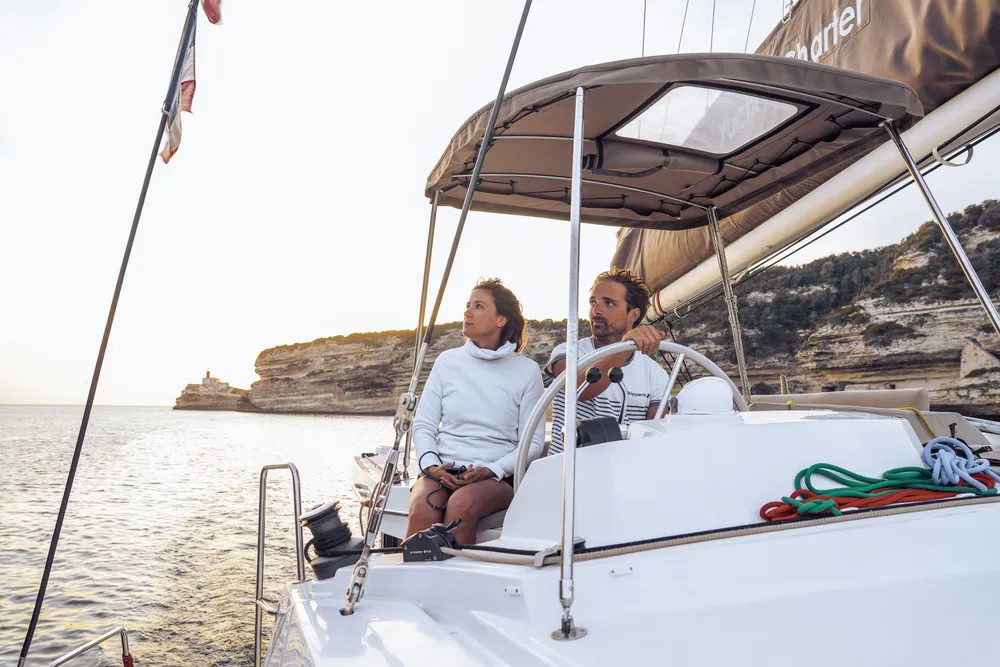The small Cogolin-based company, which built confidential catamarans in 1984, has become
today a behemoth in the sector: in 40 years, Catana Group has become one of the world’s top 3
multihull builders, with 4 production sites, 1,500 employees and sales of over €200 million by 2023.
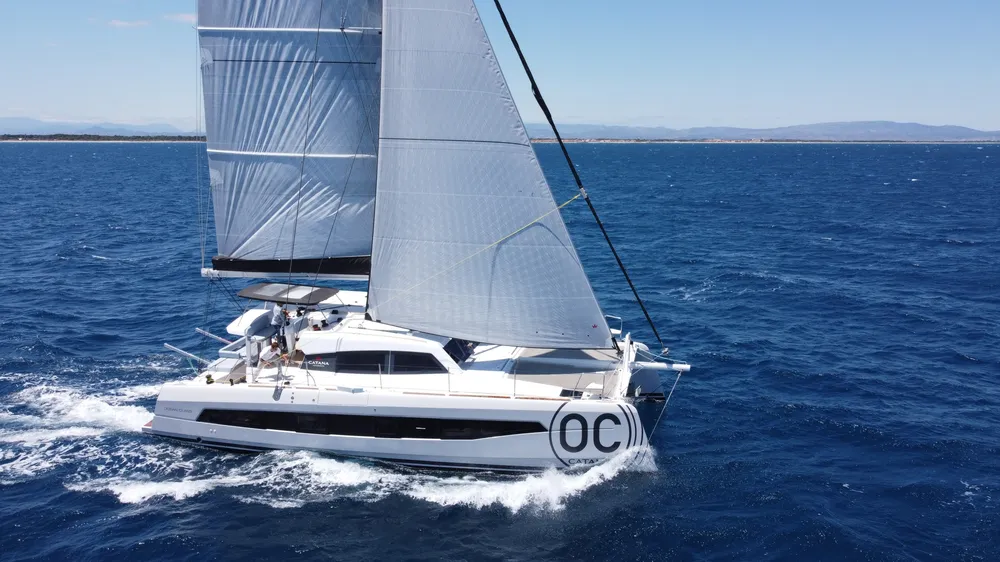
Catana was born in 1984 from the meeting of two engineers, Jean-Pierre Prade and Thierry Goyard. Together, the two men asked architect Lock Crowther to design a fast, uncluttered catamaran for them; the Catana 40 Pêcheur de Lune was built on a shoestring in Cogolin, a stone’s throw from Saint-Tropez. This multihull is not fitted out, and its outboard motor is chair-mounted. The company builds other models, but suffers from low capitalization, lack of equipment (no overhead crane) and relative remoteness from the sea (7 km). Catana produces 5 to 6 catamarans a year.
In 1989, architect Christophe Barreau designed the Catana 42, of which 33 were built – an initial success. In 1992, the company ran into difficulties. The man who was to become the brand’s providential man, Olivier Poncin, was then Dufour’s boss. An agreement was almost signed between the industrialist and Catana, but in the end, the marriage did not take place. Olivier Poncin set up Nautitech and launched 3 models: the 395, the 435 and the 475. In the meantime, Catana looked for other financial partners and moved to Canet-en-Roussillon in 1997. It was at this time that Bruno Nicoletti completed a solo circumnavigation of the globe via the three capes aboard a Catana 44 – the brand’s reputation was made! In 1999, Catana 471 owner Yves Gallot-Lavallée took control of the shipyard. He made a radical shift towards comfort. Aware of an aging clientele, he offered catamarans that were much better equipped. But the boats became heavier and less efficient, due to a lack of real technological innovation. This positioning sent out a mixed message to customers, and Catana went bankrupt in 2003.
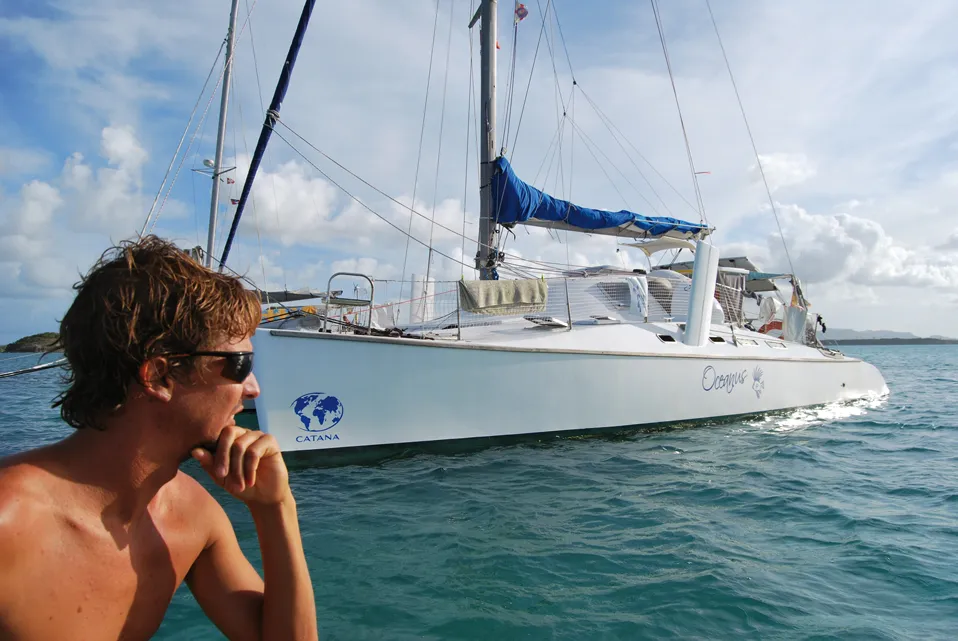
©DR
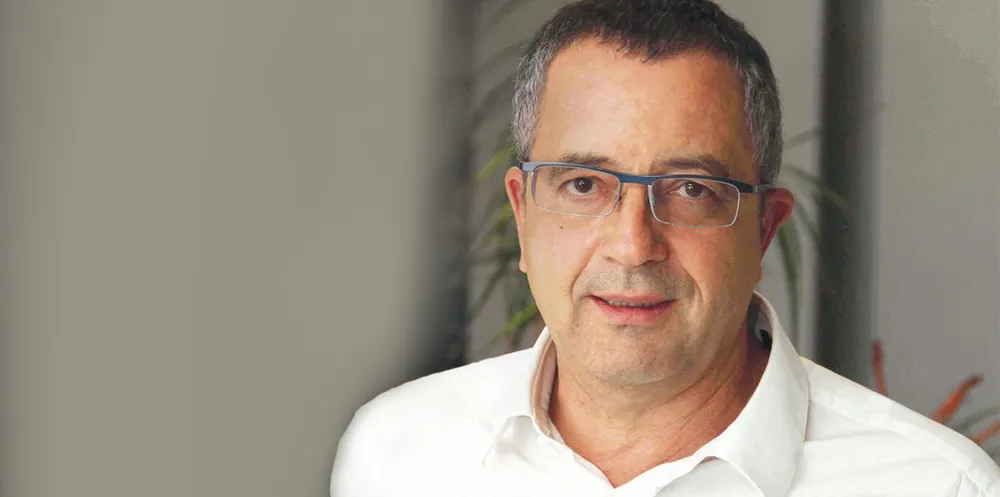
©DR
2003: Olivier Poncin takes the helm at Catana
The administrator at the time had four files in front of him. Olivier Poncin’s was the most credible. 11 years after his first approach, the company director bought back the site. This time, the architectural line was convincing: Catana stands out from the competition. The fourth generation of catamarans is ordered from Christophe Barreau – 6 or 7 models in all. But when the architect decided to work on new projects, Catana asked his design office to design a range of even more luxurious large cruising catamarans: the 59, which replaces the 581 born in 2000, is a good illustration of this new direction. This model was followed by the 70 and then the 63. In 2012, Olivier Poncin’s diagnosis is that the Catana niche has widened a little, but that there are more players. Competition with Outremer is tough: “Catana alumni miss the simpler, cheaper boats,” explained the big boss in 2014. At the same time, I’m well aware that today’s customers are looking above all for comfort and volume. The major builders are going further and accepting the drop in performance. They’re saving money with heavy balsa sandwiches because they absorb too much resin. For my part, I want to perpetuate the Catana heritage with hulls and decks in PVC foam sandwich. We started from scratch. No more daggerboards, no more carbon or Kevlar, but simplified construction and rigging solutions, a huge bay window, more diesel and water storage – in short, an innovative and fun catamaran on the water. “
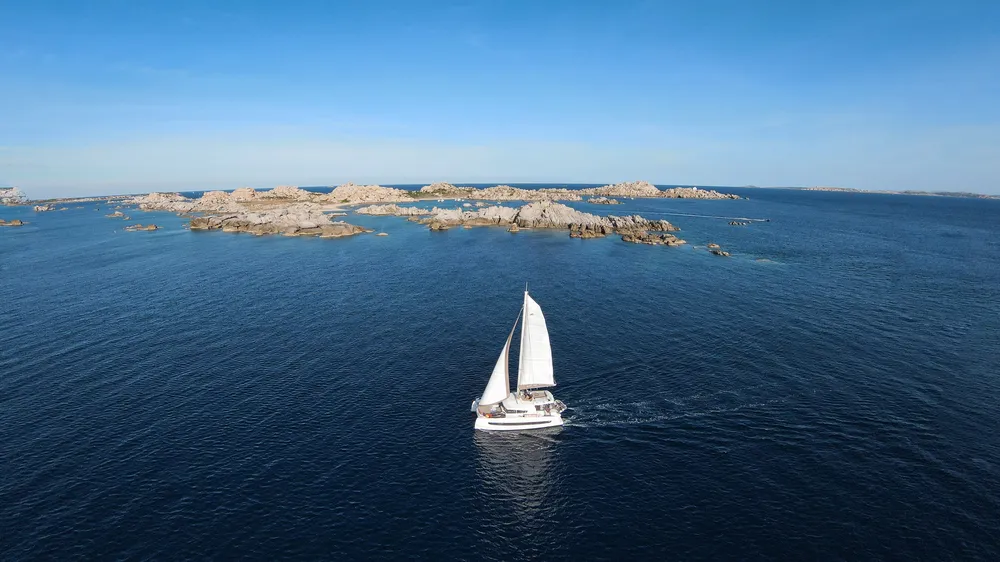
The Bali revolution
This multihull that’s titillating curiosity is, of course, the first Bali, the 4.5, unveiled at Cannes in September 2014. This novelty is the talk of the town: it’s unquestionably a new way of living on the water, taking advantage, in terms of comfort, of all that the catamaran formula could offer. It’s a no-holds-barred approach that makes even the most conservative of sailors cringe… In the end, the Bali concept has proved its worth, with almost 1,500 models built in 10 years. The range currently comprises 7 catamarans from 38 to 54 feet, making it one of the most complete on the market and even the most star-studded in this 11 to 17 m sailing catamaran segment. The Bali concept has become a firm fixture, and the many innovations that have ensured the success of this new range owe a great deal to Olivier, who died in 2023. He himself still appears in the specifications of his catamarans as “designer”.
And Catana? The dazzling success of Bali has somewhat muted the parent brand, but the launch of the Ocean Class just over two years ago shows that the Catana myth doesn’t need much to be gilded anew… In the medium term, a complete range could be unveiled – to be continued!
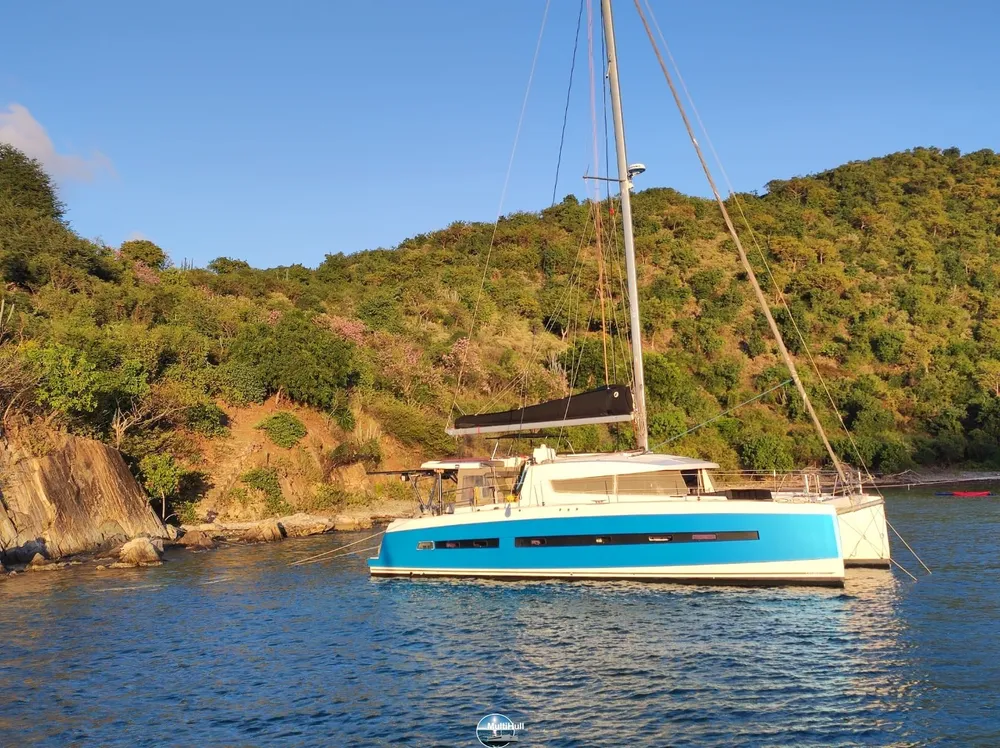
IN SEPTEMBER 2014, JUST 10 YEARS AGO… ©Kelagopian
